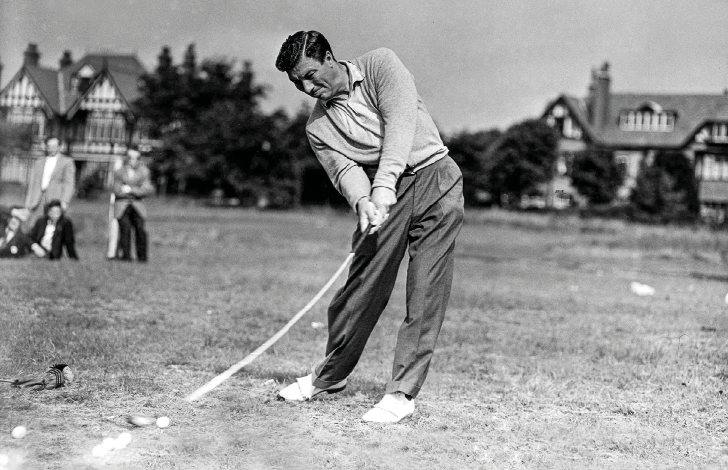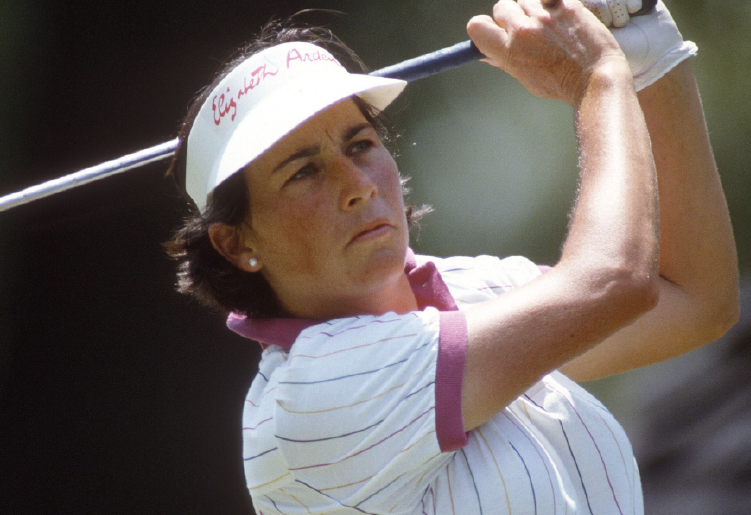With five Grand Slam titles each, they are eighth in the rankings of major championship winners...
Peter Thomson, “The Melbourne Tiger”, was the thinking man’s golfer. His clean, brisk game was based on cold logic and a gift for reducing things to their simplest essentials. His style was free of the extraneous, so that the path he would take to victory seemed a remarkably straight line.
Between 1954 and 1965, the Australian won the British Open five times. He and Young Tom Morris were among only four men to win it three times consecutively. He won 26 times in Europe, 19 times in Australia and New Zealand, and 11 more times in Asia and Japan. He played only a few seasons in the U.S., garnering one victory, the 1956 Texas Open, where he closed with a 63 and defeated Cary Middlecoff and Gene Littler in a play-off.

Thomson was best on fast-running courses where judging the bounce and run of the ball was more important than long hitting. Mostly for that reason, he did not excel when playing on the well-watered and longer courses in the United States. Other than his victory in Texas, Thomson’s best showing in a U.S. event was fourth place in the 1956 U.S. Open and fifth in the 1957 Masters. He never played in the U.S. PGA Championship.
That apparent void in his record is the reason Thomson’s victory in the 1965 British Open at Birkdale is considered his finest hour. By that year, most of America’s prominent professionals were competing in the oldest championship, and Thomson beat them all handily.
But even without that victory Thomson’s championship mettle is beyond reproach. With his confident gait and serene smile, he had the self-possessed aura of a winner. “I never saw a golfer who seemed so assured of his destiny,” wrote Pat Ward-Thomas. “There is about him the unmistakable air of success.”
Thomson was born on 23 August 1929 in Melbourne, Australia. As a boy, his first strokes were made on the sly at a nine-hole club named Royal Park. When the members saw his talent, he was given playing privileges, and by age 15 he was the club champion. After a two-year apprenticeship as an assistant pro along Melbourne’s famed sandbelt, Thomson turned professional and quickly dominated Australian golf. “I sensed he had that inevitable something when I first set eyes on him,” said the great Australian pro Norman von Nida. As a young professional, he was profoundly influenced by friendships with Bobby Locke, Ben Hogan and Sam Snead.
Thomson was gifted with a true affinity for being in the thick of the tense closing moments of a championship. “That was the real thrill of it for me,” he said in his biography. “I’ve seen a lot of people find themselves in that situation, and I suspect that very few of them like it, but I really enjoyed it.”
By temperament and design, Thomson indeed seemed pressure-proof. His grip was light, his manner at address brisk and his motion through the ball graceful and devoid of much physical effort. He was a reliable and occasionally brilliant putter. “There were no frills,” said von Nida, “so virtually nothing could go wrong.”
Above all, Thomson had a head for the game. “The most important facets of golf are careful planning, calm and clear thinking and the ordinary logic of common sense,” he once wrote. It was the same cool detachment with which he separated his competitive self from the rest of his life. He was truly a balanced man in a world that usually requires obsessive and narrow dedication. Thomson enjoyed reading, the opera and painting. He ran for elected office in Australia in 1982, narrowly losing. After his competitive rounds, when he was abroad, he often wrote cogent dispatches and columns for the Melbourne Herald. Later in his career, he designed golf courses, especially in Asia, where he was also instrumental in establishing professional tours. His diverse interests were a big reason why he chose not to uproot himself for America like other Australian golfers.
He did give the Champions Tour a brief try and the results were outstanding. In 1985, he won nine tournaments, a record he shares with Hale Irwin.
Peter Thomson died in Melbourne on 20 June 2018 after a four-year battle with Parkinson’s disease, at the age of 88.
AMY ALCOTT
“You have to be a perfectionist. You have to hate playing badly more than you love playing well. You have to hate losing more than you love winning.” This was the philosophy of Amy Alcott, one of the greatest U.S. golfers during the last 25 years of the 20th century.
Alcott had waited to join the World Golf Hall of Fame for a long time. She had been on the cusp of entering the Hall since she captured her third Dinah Shore Classic in 1991 and plunged into the pond alongside the 18th green to celebrate the occasion. It was one of the shining moments of Alcott’s illustrious career, but since then she had been reminded of what she had not accomplished – that elusive 30th win that would grant her instant access through the LPGA points system into the Hall of Fame.

Whenever she competed, she said she heard well-meaning fans say, “Come on, Amy. You can win one more and get in.” These warm wishes of support were a constant reminder of how close she truly was to joining an elite group.
On 9 February 1999, Alcott’s wait ended; not when she won again, but when the LPGA membership overwhelmingly voted in favor of a points system for active players and the creation of a 12-person veterans committee. She and Beth Daniel were the immediate benefactors of the new qualification standards.
The former qualifications were considered the most rigorous in professional sports. Only 14 players had met the standards since 1950, and none since Betsy King in 1985.
“The goal of the Hall of Fame is to honour those players that dominated women’s golf during their era,” said then-LPGA Commissioner Jim Ritts. “As the tour has grown in stature and the depth of talent expanded, the existing criteria precluded some of the tour’s greatest players from gaining recognition. The hallmark of the newly approved criteria is that the Hall of Fame will remain performance-based, and yet it is an attainable achievement for the elite players of today.”
Indeed, Alcott was a dominant player of her era. A native of Kansas City (1956), Alcott joined the LPGA in 1975 after capturing the 1973 USGA Girls’ Junior at age 17. On her 19th birthday, in only the third LPGA Tour event she entered, she won the Orange Blossom Classic and went on to win LPGA Rookie of the Year honours.
Subsequently, she blazed irons better than almost anyone in the game to amass 29 victories during her pro career, including five majors. With her two victories in 1986, Alcott had 15 top-10 finishes, including winning the Nabisco Dinah Shore and becoming only the third LPGA member to surpass the $2 million mark in career earnings. She continued her winning ways and reached the $3 million mark in 1994.
“To be honoured in the great circles of golf, to be enshrined with the other great Hall of Famers is something that I truly looked forward to,” said Alcott at the press conference announcing her place in the Hall of Fame. “In my heart, I have felt that I’ve had a Hall of Fame career.”
Alcott has continued to impact the game since her playing career ended. In 2008, she was named to the advisory board of the Southern California PGA Foundation. And from 2001 to 2004 she was a major part of an LPGA event, the Office Depot Championship Hosted by Amy Alcott.
She has also been involved in course design, consulting on Indian Canyons Golf Course in Palm Springs, California, and Brick Landing Golf Club in Ocean Isle, North Carolina. In March 2012, Alcott’s crowning course design achievement came when she paired with Hanse Golf Course Design to create the winning bid to design the golf course in Rio de Janeiro, Brazil, for the 2016 Olympics.








